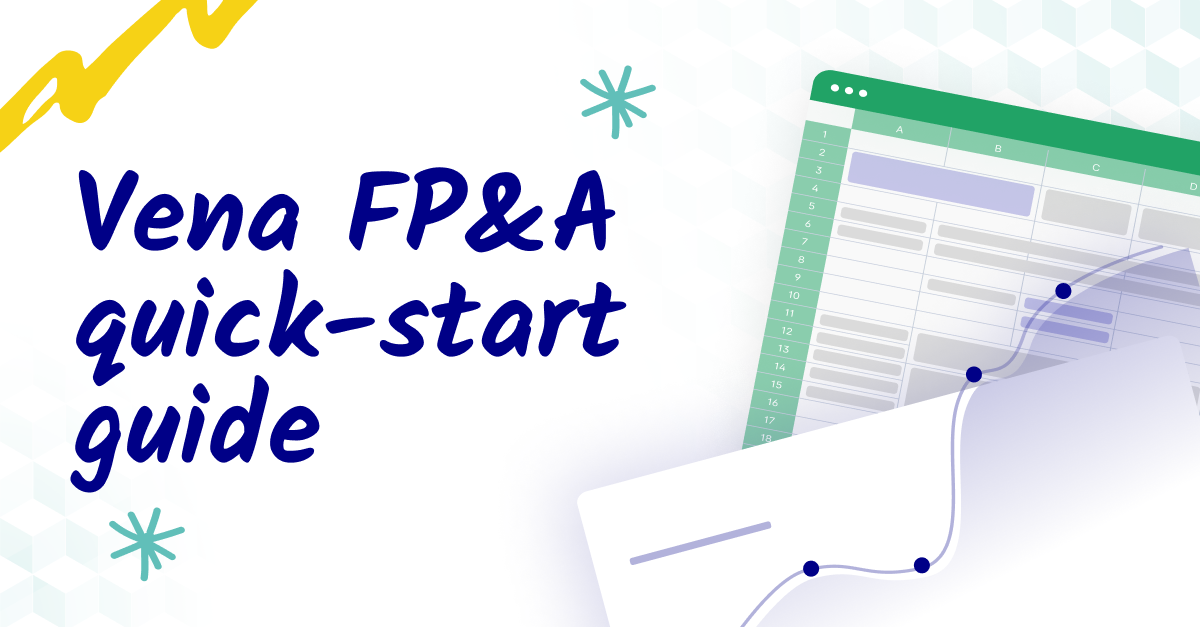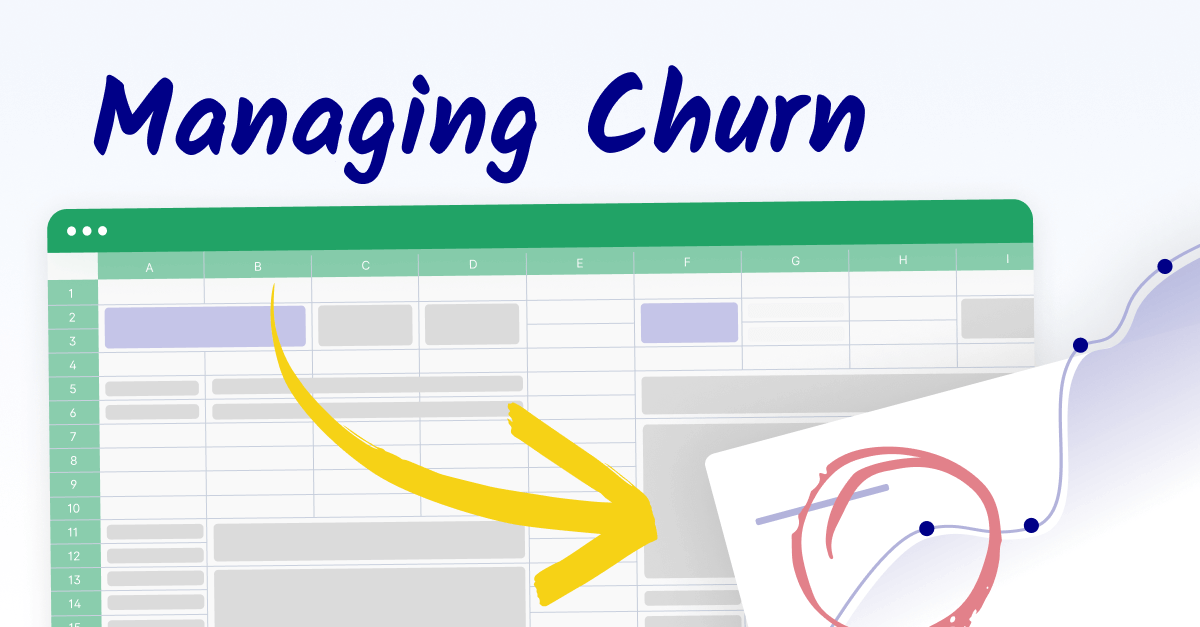What is Vena Solutions?
Vena FP&A software is a complete planning platform built for small to medium-sized businesses (SMBs) that simplifies the budgeting, planning, and forecasting processes.
It provides advanced analytics, visualizations, what-if analysis, and automation capabilities that help companies better align their financial goals with their overall business strategy. Vena Solutions also helps streamline collaboration between departments during the budgeting cycle by allowing multiple users to access the platform with advanced permissions and security features.
Let's take a look at the Vena experience and consider the features that make it a platform worth exploring.

Getting started with Vena Solutions
Vena is a customizable solution suited to the needs of SMBs and mid-market companies. Although this is their primary market, Vena also serves enterprise-sized businesses.
Those considering Vena should be aware that the platform does not integrate with Google Sheets, and offers only limited functionality with Mac.
Initial setup
The Vena FP&A initial setup is an in-depth process, requiring a consultant to assist with setting up environments and models, integrate data streams, and prepare the system for use by the various roles.
The setup process takes about eight to 20 weeks on average to complete. However, for organizations with more complex data sources or specialized needs, the onboarding process may be longer.
During the implementation period, the consultant team will work with your internal finance teams to identify and integrate all existing models, data streams, and historical data, map them to pre-established templates and financial reporting dashboards, establish any customized reporting or models, and ensure data fidelity between data sources and the platform.
User roles
Vena breaks up its functionality by role, allowing every user within the organization to access the right level of tools and controls for their needs through data and application permissions. These roles include:
- Manager: Management-level users in Vena FP&A can control and organize activities within the platform. They can set up and administer workflows for the data streams coming into the system, including accounting, FP&A processes, annual budgeting, monthly forecasting, financial reporting, risk management, sales, operations, workforce planning, and more.
- Contributor: These non-managing end-users pass plan data, like budgeting, into the system. Contributors can use custom or pre-built templates to enter data for tracking and analysis. This user level also has review privileges for the approval of data.
- Modeler: This user role controls the data manipulation aspects of the platform. Modelers can control hierarchies, conduct what-if analyses, build charts of accounts, data integrations, source systems, etc.
- Admin: The admin user role controls the back-end administration of the platform itself, such as user setup, permissions, data access, and system security.
Permissions
Vena offers user-level data security controls for every member of your organization. Every file and data stream within the platform can be custom-controlled through granular permissions set by the administrator.
Integrating data sources
There are multiple ways to pull data into the Vena platform. Depending on your mix of data sources, you may use one or all of these methods to integrate data into the system:
Native connectors
Vena FP&A offers several native integrations for connecting data streams into the system, including:
- Salesforce
- NetSuite
- Sage Intacct
- Quickbooks Online
- Intuit
- Microsoft Dynamics 365 Business Central
These connectors integrate data source systems into systems using scheduled transfers.
Power BI connector
For a lower-code solution, Vena Solutions can connect data streams using an interface with Power BI.
Public import API
Vena FP&A offers an open, standards-based API, allowing users to connect systems and databases to Vena's platform for easy data import and export. This method requires an IT user or consultant to code the relevant mappings from the data source systems for correct presentation within the Vena FP&A system.
Extract, Transform, Load (ETL) uploads
This data upload process allows an IT user or consultant to upload raw data into the Vena system.
Navigating the dashboard
Vena FP&A’s UI is designed to make it easy for users from across the organization to navigate the platform and dashboard features. It offers a broad range of out-of-the-box templates and financial reporting options for contributors, as well as a "reports and analysis" section of the platform for at-a-glance information from all integrated sources.
Visual workflow building
Vena’s workflow planning tools help finance managers create process efficiencies for FP&A activities like budgeting, forecasting, and planning. Managers can build a collaborative workflow using the designer tool from start to finish. The designer allows the user to define key owners and timelines, assign sub-processes, set review requirements, report outputs, etc.
Status tracker
For every activity workflow, Vena offers a heads-up project tracking tool to review progress on timelines and milestones. The tracker creates a visual breakdown of progress, including:
- Total percentage compete
- Overdue tasks
- Calendar view (for time-sensitive tasks)
- User-assigned activities and workforce planning
Using the Vena Solutions Excel add-in
Vena offers a native Excel environment that allows users to plan, budget, and forecast within the spreadsheet environment they already know. The interface allows users to operate in a desktop or browser-based version of Excel and take advantage of Excel’s strengths, including what-if analysis.
The one caveat to this Excel-ready tool is that while the work happens in Excel, it’s tied into the Vena Solutions work environment. This means that everyone on your team will need a license to easily share, view, and edit reports. There is the possibility of sharing data with non-Vena team members, but there’s no easy way to accomplish this. Be prepared to pay for seats for every finance and non-finance team member who will need to access or manipulate data.
Budgeting and forecasting
Starting a new budgeting or forecasting activity in Vena FP&A is made easier through the platform’s templates library. When a user opens a new budgeting file to contribute information, Vena templatizes the Excel sheets, ties the information back to the system, and maps the contributed data to the backend of your database(s). Any data currently in Vena is pulled into the relevant fields from the database.

Advanced features for enhanced financial analysis
Beyond the basics of budgeting and financial forecasting software, Vena Solutions offers multi-dimensional planning resources for comparing outcomes and analyzing the impact of decisions.
Scenario modeling in Vena Solutions
One of the features that makes Vena FP&A useful for SMBs is its ability to help create multi-scenario financial analysis for better decision-making.
With what-if analysis and scenario planning powered by Excel, users generate multiple models to compare variables and outcomes. The system can also create dynamic forecasting software models to test different hypotheses and assumptions leveraging existing data sources. This helps streamline the entire process from data acquisition to actual implementation of budgeting or forecasting.
Reporting and dashboards
Vena Solutions provides reporting capabilities that pull information directly from relevant sources to present in auto-populating reports and visualizations. The platform allows users to create reports for most common finance, operational, sales, HR, and other functions across departments:
- Financial close and consolidation
- Workforce planning and forecasting
- Revenue and expense planning and reporting
- Variance and flux analysis
- Budget reporting, including budget-to-actual comparisons
- Regulatory compliance reporting for finance, HR, and operations
- Management and KPI reports
The platform also allows users to map custom reports and automate tasks at intervals determined by a manager or user with appropriate permissions.
Best practices for Vena implementation in SMBs
When using Vena FP&A to plan and analyze your organization's financial data, adhere to these best practices to ensure data freshness and best outcomes:
Regular data updates
It’s important to note that Vena Solutions does not support real-time data refresh for every information stream. To ensure your forecasting software and modeling activities are using the most recent data, be sure to refresh before running reports manually. Vena does offer custom scheduled data refreshes for some data sources, though manual sources like API and ETL calls may not.
Engaging the team
Vena is an FP&A tool meant to help SMBs and mid-market organizations manage and synthesize complex data. Vena reviews reveal that Vena often has a steep learning curve and that the company should add more educational resources to assist in onboarding and team education.
In most cases, the key to gaining buy-in for Vena Solutions is to invest time and resources into the onboarding process. This means using a professional consultant to set up the models and environment. Giving users the correct access level for their needs will prevent overwhelm and enhance the learning process for every role.
Taking advantage of Vena support and resources
Vena is structured with a professional services model for setup and changes to modeling, customizations, and additional changes within the platform environment. This means that administrators, managers, and end users will need access to customer support for issues or changes like onboarding new users.
Be aware that this model has costs beyond the monthly or annual subscription costs per user. Budgeting for these expenses should be part of the Vena price evaluation. For those costs, you have access to customer service and resources to help customize Vena forecasting software to suit the needs of your organization.
Establishing an onboarding program for new users is another way to ensure they have the resources and understanding to make the most of the platform. The learning curve for Vena is steeper than many of its competitors, so using resources and customer support is essential.
Conclusion: The Vena Solutions experience
While Vena offers a comprehensive budgeting, forecasting, and modeling solution for growing businesses, it has some limitations and drawbacks that may hinder finance teams from achieving their best outcomes using the platform.
When it comes to budgeting and forecasting software, a thorough evaluation is crucial to ensure you’re choosing the right fit for your business. Those looking for an alternative to Vena’s professional services approach to FP&A should consider Cube. It provides native Excel integration, plus all the functionality of a complete planning platform in a low-code environment that doesn’t tie down finance teams or restrict software choice.
Want to learn how Cube budgeting and forecasting software can help you level up your finance function? Request a free demo today.



.png)









.png)
.png)




.png)
.png)
